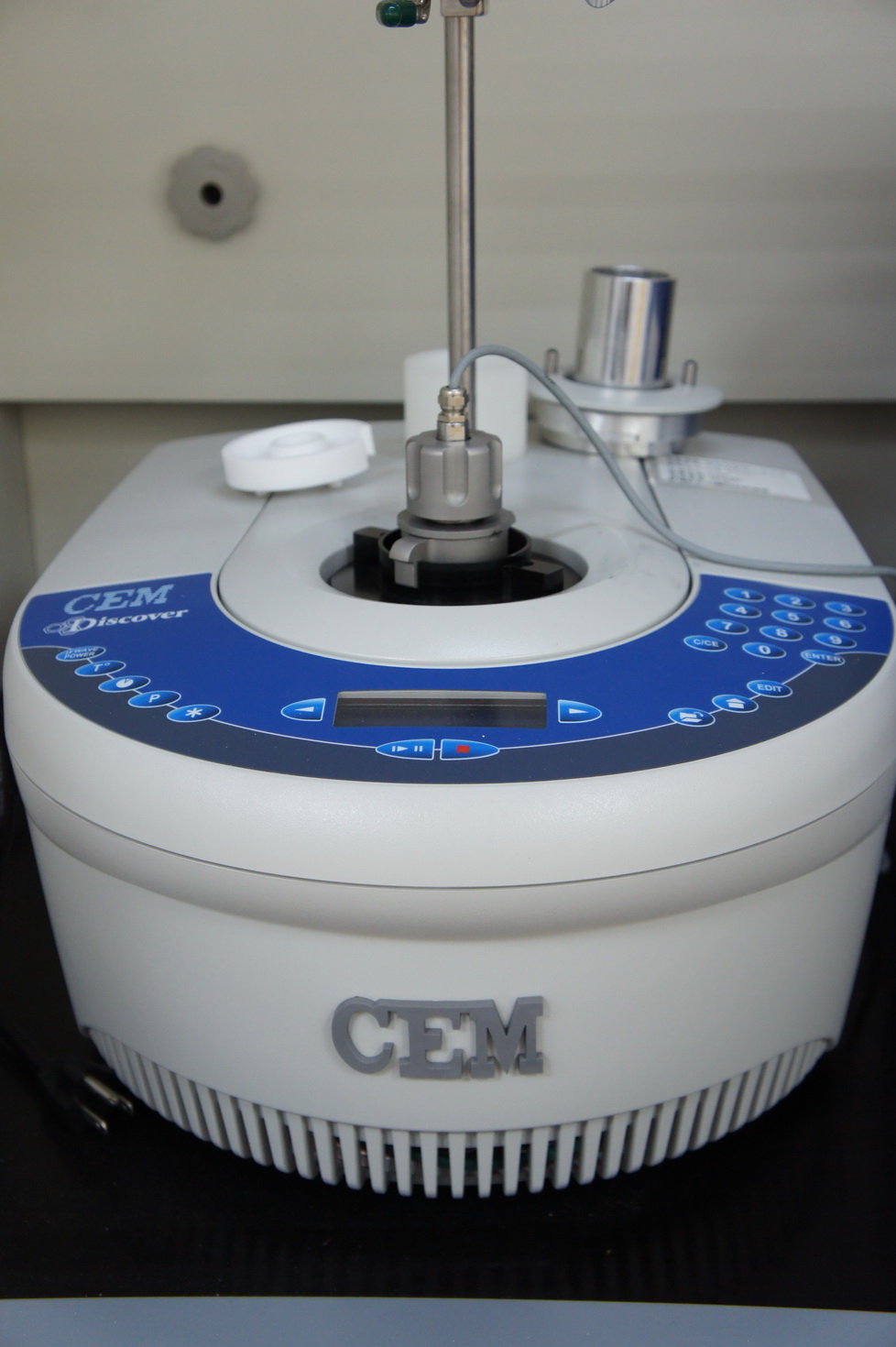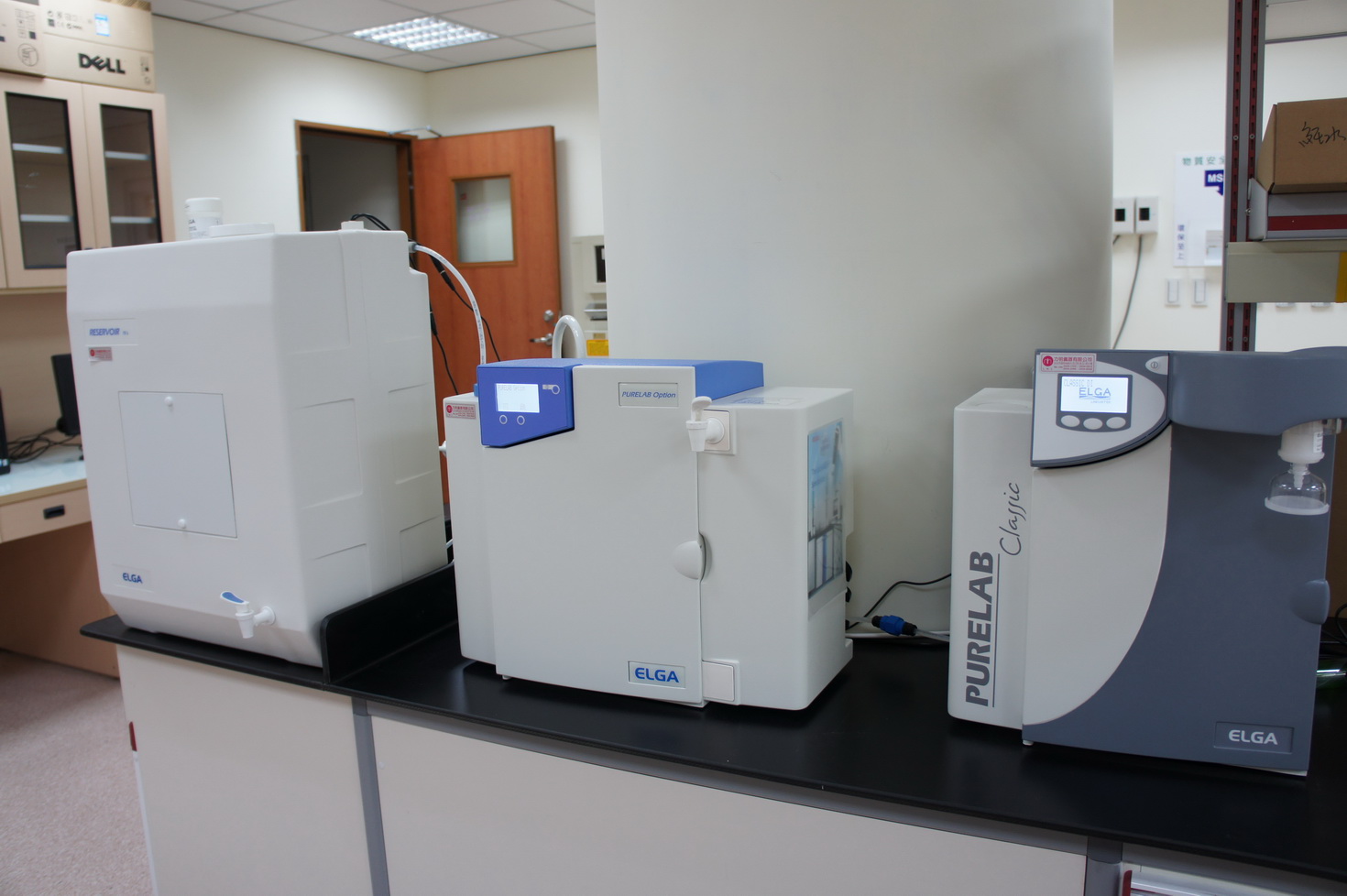|
Equipment
|
Principle
|
1
|
Focused Microwave Synthesis System
|
Focused microwave synthesis system enhances the ability to promote chemical reactions under controlled conditions, facilitating either homogeneous or heterogeneous solution chemistry, solid-phase chemistry or chemistry conducted on solid supports. The system accommodates vessels ranging in volume from 5 to 125 mL for reactions performed under atmospheric conditons and 10 and 80 mL sealed vessels for reactions performed at elevated temperatures and pressures.
|

|
2
|
Rotary Vacuum Evaporator
|
Rotary vacuum evaporation is a way for dehydration by heating the sample solution, which is the most commonly used method of purifying and concentrating. Heating the sample solution increases the rate of vaporization under atmospheric pressure and the vaporization can also be carried out by reducing the the pressure to lower the boiling point without thermal effect.
|

|
3
|
Water Purification System
|
Water purification systems generally refers to a variety of water treatment processes and water quality monitoring. The most common impurities in natural water include soluble inorganic, organic, particulate matter, microorganisms and soluble gases, etc. Ultra-pure water purification is as thoroughly as possible to remove these impurities. The most commonly used water purification methods are distillation, reverse osmosis, ion exchange, filtration, adsorption, ultraviolet oxidation method. In general, ultra-pure water purification process can be divided into four main steps: water pretreatment (primary purification), reverse osmosis (to produce pure water), ion exchange (can produce 18.2 M.cm) and terminal processing (production of ultra-pure water to meet specific requirements).
|

|
4
|
Bead Mills for Nano Grinding & Dispersing
|
The powder of primary particles is gradually grounded from micron and sub-micron into nano-level particle size via shear force and impact force. Nano-level powder is grounded from a serious aggregation to uniform dispersion by the grinding media with an appropriate solvent and dispersing agent.
|

|
5
|
MINICER
|
Applies to batches between 0.25 and 0.5 l of the test material, the the material can reach the nanoscale of ding fineness.
|

|








